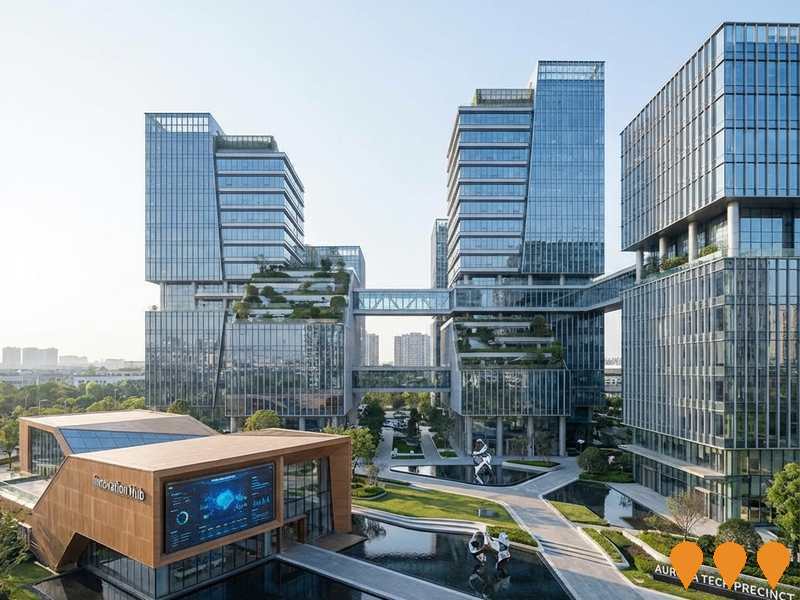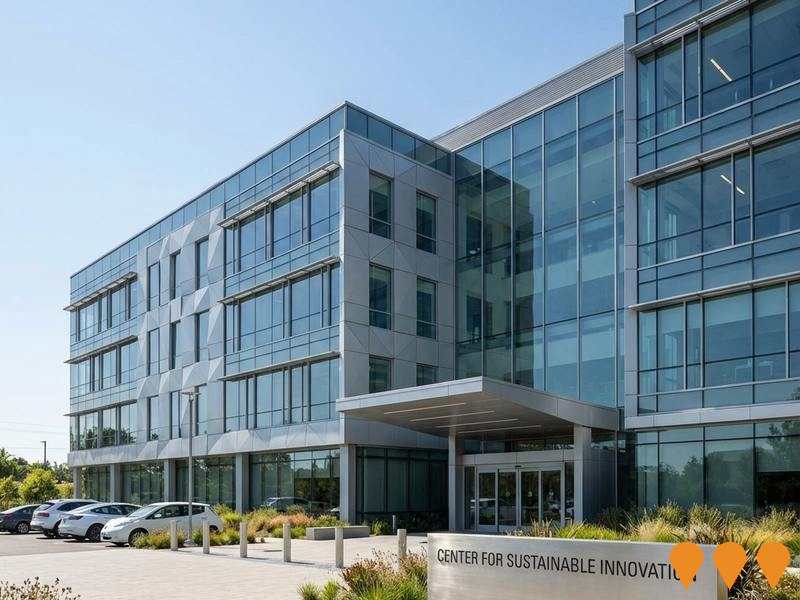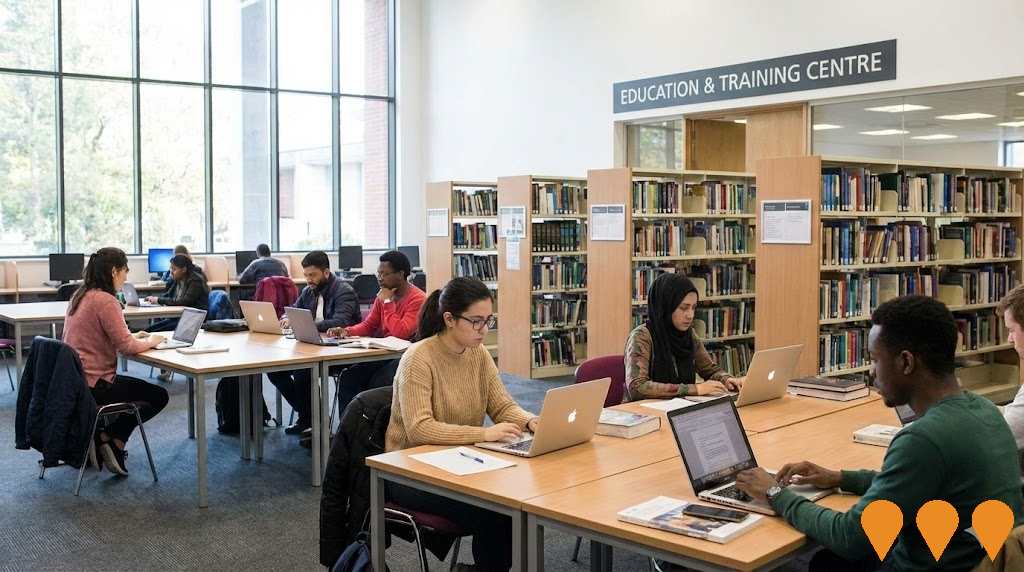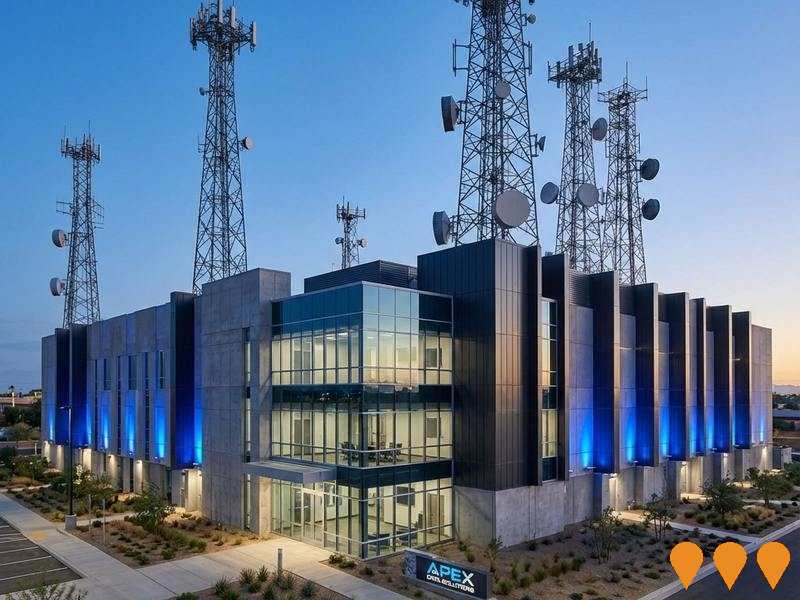Chart Color Schemes
est. as @ -- *
ABS ERP | -- people | --
2021 Census | -- people
Sales Activity
Curious about local property values? Filter the chart to assess the volume and appreciation (including resales) trends and regional comparisons, or scroll to the map below view this information at an individual property level.
Find a Recent Sale
Sales Detail
Population
Woodridge is positioned among the lower quartile of areas assessed nationally for population growth based on AreaSearch's assessment of recent, and medium term trends
Woodridge's population, as of August 2025, is approximately 13,910. This figure represents an increase of 928 people since the 2021 Census, which recorded a population of 12,982. The estimated resident population in June 2024 was 13,902, along with 18 validated new addresses added after the Census date. This results in a population density ratio of 2,978 persons per square kilometer, placing Woodridge in the upper quartile nationally according to AreaSearch assessments. The area's growth rate of 7.1% since the 2021 census exceeded that of its SA3 region (6.2%), indicating it as a growth leader. Overseas migration contributed approximately 74.0% of overall population gains in recent periods.
AreaSearch uses ABS/Geoscience Australia projections for each SA2 area, released in 2024 with a base year of 2022. For areas not covered by this data and years post-2032, Queensland State Government's SA2 area projections are adopted, released in 2023 based on 2021 data. However, these state projections lack age category splits; hence proportional growth weightings from ABS Greater Capital Region projections (released in 2023, based on 2022 data) are applied. Considering projected demographic shifts, Woodridge is expected to experience a population increase just below the national median by 2041. Based on the latest population numbers, the area is projected to grow by 807 persons over these 17 years, representing an increase of approximately 5.7% in total population.
Frequently Asked Questions - Population
Development
Residential development activity is slightly higher than average within Woodridge when compared nationally
Woodridge averaged approximately 25 new dwelling approvals annually over the past five financial years, totalling 129 homes. As of FY-26 so far, 2 approvals have been recorded. The average population growth per year for each dwelling built in Woodridge between FY-21 and FY-25 was 5.1 people. This demand outpaces supply, which typically exerts upward pressure on prices and intensifies competition among buyers.
New properties are constructed at an average expected construction cost of $324,000, lower than regional levels, indicating more affordable housing options for buyers. In FY-26, approximately $3.4 million in commercial approvals have been registered, suggesting limited focus on commercial development. Compared to Greater Brisbane, Woodridge shows around 69% of the construction activity per person and ranks among the 38th percentile nationally, resulting in relatively constrained buyer choice and supporting interest in existing homes. However, recent development activity has increased.
New development consists of 80.0% detached dwellings and 20.0% medium to high-density housing, preserving Woodridge's suburban nature and attracting space-seeking buyers. Interestingly, developers are building more traditional houses than the current mix suggests (60.0% at Census), indicating strong demand for family homes despite density pressures. With approximately 472 people per approval, Woodridge indicates a mature market. Looking ahead, Woodridge is projected to grow by 799 residents through to 2041. Based on current development patterns, new housing supply should readily meet demand, offering good conditions for buyers and potentially facilitating population growth beyond current projections.
Frequently Asked Questions - Development
Infrastructure
Woodridge has moderate levels of nearby infrastructure activity, ranking in the 45thth percentile nationally
Area infrastructure significantly impacts local performance. AreaSearch identified 26 projects potentially affecting the area. Notable initiatives include Northwest Healthcare Centre - Meadowbrook, Logan Central Civic and Community Precinct, Kuraby Technology Innovation Hub, and Kuraby Residential Development (Stockland). The following list details those likely to be most relevant.
Professional plan users can use the search below to filter and access additional projects.
INFRASTRUCTURE SEARCH
 Denotes AI-based impression for illustrative purposes only, not to be taken as definitive under any circumstances. Please follow links and conduct other investigations from the project's source for actual imagery. Developers and project owners wishing us to use original imagery please Contact Us and we will do so.
Denotes AI-based impression for illustrative purposes only, not to be taken as definitive under any circumstances. Please follow links and conduct other investigations from the project's source for actual imagery. Developers and project owners wishing us to use original imagery please Contact Us and we will do so.
Frequently Asked Questions - Infrastructure
Loganlea Station Relocation
Relocation of Loganlea Station as part of the Logan and Gold Coast Faster Rail project. New station will feature improved accessibility, platforms for four-track configuration, and enhanced passenger facilities.

Logan Central Civic and Community Precinct
Major civic redevelopment project transforming Logan Central with new civic buildings, community facilities, public spaces, and mixed-use developments. The project aims to create a vibrant heart for the Logan community.

Paradise Road Large Format Retail Development
High-exposure DA-approved retail development site in the heart of Logan's dynamic commercial precinct. The site sits directly behind IKEA and the Logan Super Centre, making it ideal for large format retail users. DA and Operational Works approvals are in place for two substantial showrooms totaling approximately 2,500 square meters with 71 on-site car parks. The property is zoned for Retail Showroom use with flexibility for alternate uses subject to council approval. The site features drive-through access with two driveways allowing full ingress and egress via Paradise Road and Meakin Road, plus approval to modify existing traffic lights for vehicle-activated right turn signals into the site.

Kuraby Residential Development (Stockland)
Large-scale master-planned residential community featuring approximately 850 new homes, integrated parks and recreational facilities, retail precinct, and community centre. Includes affordable housing component.

Logan Bus Network Changes
Comprehensive bus service changes coinciding with Brisbane Metro M1 launch, affecting routes P569, 545, 554, 565, 566, 570, 571, 576 and 578. Adding 160 additional trips per week to improve Logan regional connectivity.

Kuraby Industrial Estate Expansion
Expansion of existing industrial estate to include additional warehousing, light manufacturing facilities, logistics centres, and improved transport connections. Focus on sustainable industrial practices.
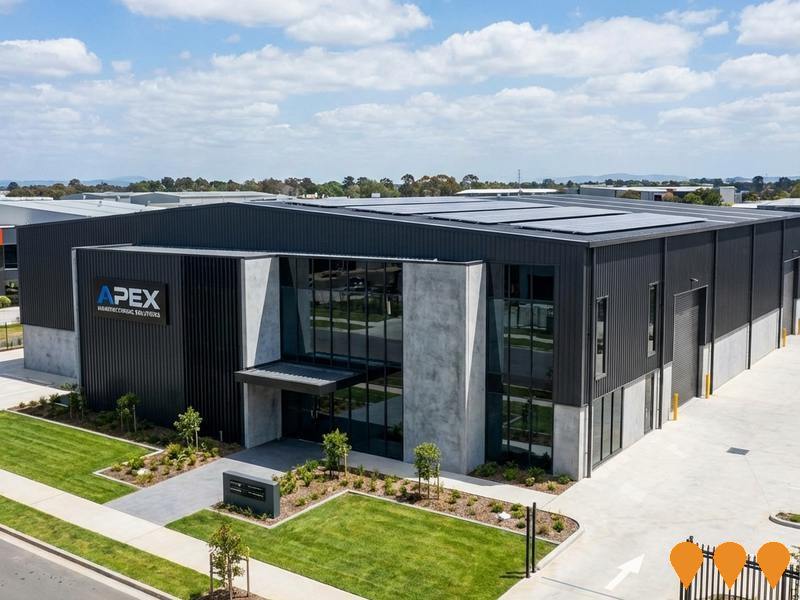
Northwest Healthcare Centre - Meadowbrook
Seven-storey private healthcare centre by Northwest Healthcare Properties. Approved development will offer comprehensive medical services, agglomerating 15 house sites with at-grade parking. Strategically co-located with Logan Hospital.
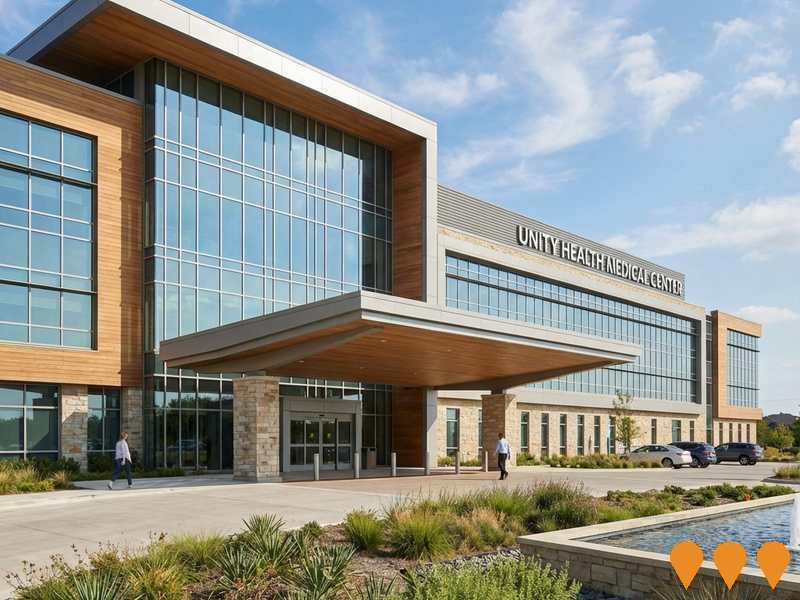
Meadowbrook Shopping Centre Expansion
Expansion of Meadowbrook Shopping Centre to support the growing health and education precinct, including new retail tenancies and medical services.
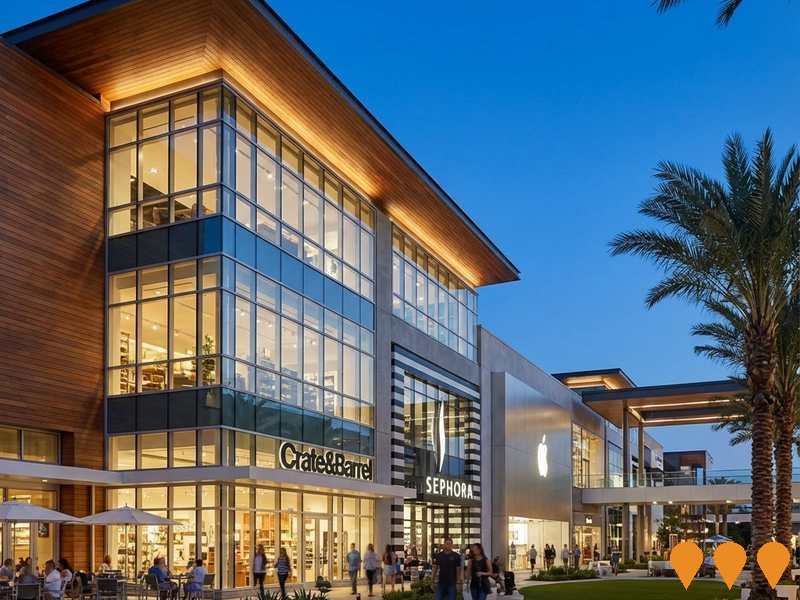
Employment
Employment drivers in Woodridge are experiencing difficulties, placing it among the bottom 20% of areas assessed across Australia
Woodridge has a balanced workforce comprising white and blue collar jobs. Manufacturing and industrial sectors are prominent, with an unemployment rate of 14.5% as of June 2025.
Employment growth over the past year was estimated at 8.8%. There are 5,203 residents employed currently, while the unemployment rate is higher than Greater Brisbane's by 6.3 percentage points (10.4%). Workforce participation in Woodridge is significantly lower at 46.3% compared to Greater Brisbane's 64.5%. The dominant employment sectors among residents include health care & social assistance, manufacturing, and transport, postal & warehousing.
Manufacturing stands out with employment levels twice the regional average. However, professional & technical services are under-represented at 3.4%, compared to 8.9% in Greater Brisbane. Over the year ending June 2025, employment increased by 8.8%, while labour force grew by 5.0%, reducing unemployment by 3.0 percentage points. In comparison, Greater Brisbane had employment growth of 4.4%, labour force growth of 4.0%, and a decrease in unemployment of 0.4 percentage points. Jobs and Skills Australia's national employment forecasts from May 2025 project overall growth of 6.6% over five years and 13.7% over ten years. Applying these projections to Woodridge's employment mix suggests local growth of approximately 5.8% over five years and 12.5% over ten years, though this is a simplified extrapolation for illustrative purposes only.
Frequently Asked Questions - Employment
Income
Income metrics place the area in the bottom 10% of locations nationally according to AreaSearch analysis
Woodridge's median taxpayer income was $40,532 and average was $43,591 in financial year 2022, according to the latest postcode level ATO data aggregated by AreaSearch. This is below Greater Brisbane's median income of $55,645 and average income of $70,520. By September 2025, estimated median income would be approximately $46,202 and average around $49,689, based on Wage Price Index growth of 13.99% since financial year 2022. In Woodridge, household, family, and personal incomes all fall between the 4th and 5th percentiles nationally, as per 2021 Census figures. The income bracket of $800 - 1,499 captures 33.3% (4,632 individuals) of Woodridge's community, differing from regional patterns where $1,500 - 2,999 dominates with 33.3%. Housing affordability pressures are severe in Woodridge, with only 78.1% of income remaining, ranking at the 5th percentile nationally.
Frequently Asked Questions - Income
Housing
Woodridge displays a diverse mix of dwelling types, with a higher proportion of rental properties than the broader region
Woodridge's dwelling structure, as per the latest Census report, consisted of 60.2% houses and 39.8% other dwellings (semi-detached, apartments, 'other' dwellings). In comparison, Brisbane metro had 77.9% houses and 22.2% other dwellings. Home ownership in Woodridge stood at 18.2%, with mortgaged dwellings at 19.5% and rented ones at 62.3%. The median monthly mortgage repayment in Woodridge was $1,200, lower than Brisbane metro's average of $1,638. The median weekly rent figure in Woodridge was recorded at $280, compared to Brisbane metro's $320. Nationally, Woodridge's mortgage repayments were significantly lower than the Australian average of $1,863, while rents were substantially below the national figure of $375.
Frequently Asked Questions - Housing
Household Composition
Woodridge features high concentrations of group households and lone person households, with a lower-than-average median household size
Family households account for 63.3% of all households, including 24.5% couples with children, 15.8% couples without children, and 21.3% single parent families. Non-family households make up the remaining 36.7%, with lone person households at 30.8% and group households comprising 5.8%. The median household size is 2.7 people, which is smaller than the Greater Brisbane average of 2.8.
Frequently Asked Questions - Households
Local Schools & Education
Woodridge faces educational challenges, with performance metrics placing it in the bottom quartile of areas assessed nationally
Woodridge has lower university qualification rates at 12.7%, significantly below Greater Brisbane's average of 30.5%. Bachelor degrees are most common at 8.9%, followed by postgraduate qualifications (2.9%) and graduate diplomas (0.9%). Vocational credentials are prominent, with 36.6% of residents aged 15+ holding such qualifications - advanced diplomas at 8.9% and certificates at 27.7%. Educational participation is high at 35.9%, including 12.8% in primary education, 11.3% in secondary education, and 3.6% pursuing tertiary education.
Woodridge's four schools have a combined enrollment of 1,332 students. There are three primary schools and one secondary school serving distinct age groups. School capacity is limited at 9.6 places per 100 residents compared to the regional average of 20.7, leading many families to travel for schooling.
Frequently Asked Questions - Education
Schools Detail
Nearby Services & Amenities
Transport
Transport servicing is good compared to other areas nationally based on assessment of service frequency, route connectivity and accessibility
Woodridge has 64 operational public transport stops, offering a combination of train and bus services. These stops are served by 24 unique routes that facilitate a total of 2,087 weekly passenger trips. Residents enjoy excellent transport accessibility, with an average distance of 168 meters to the nearest stop.
The service frequency is 298 trips per day across all routes, translating to roughly 32 weekly trips per individual stop.
Frequently Asked Questions - Transport
Transport Stops Detail
Health
Health performance in Woodridge is well below average with considerably higher than average prevalence of common health conditions and to an even higher degree among older age cohorts
Woodridge faces significant health challenges with a notably higher prevalence of common health conditions compared to average, particularly amongst older age groups. The rate of private health cover in Woodridge is approximately 47% (6,482 people), lower than Greater Brisbane's 49.5% and the national average of 55.3%. Mental health issues affect 9.8% of residents, while asthma impacts 8.5%.
Conversely, 66.5% of residents report no medical ailments, compared to 68.5% in Greater Brisbane. The area has a senior population (aged 65 and over) of 15.1%, totaling 2,093 people. Health outcomes amongst seniors require more attention than the broader population.
Frequently Asked Questions - Health
Cultural Diversity
Woodridge is among the most culturally diverse areas in the country based on AreaSearch assessment of a range of language and cultural background related metrics
Woodridge has a high level of cultural diversity, with 38.1% of its population speaking a language other than English at home and 43.4% born overseas. Christianity is the predominant religion in Woodridge, comprising 48.0% of people. However, Islam is significantly overrepresented compared to the Greater Brisbane average, making up 14.1% of Woodridge's population.
The top three ancestry groups are Other (27.8%), English (19.7%), and Australian (18.2%). Notably, Samoan (3.7%), Maori (2.8%), and New Zealand (1.3%) ethnicities are also overrepresented compared to regional averages.
Frequently Asked Questions - Diversity
Age
Woodridge's young demographic places it in the bottom 15% of areas nationwide
Woodridge's median age is 33 years, which is younger than Greater Brisbane's average of 36 years and significantly lower than the national average of 38 years. Compared to Greater Brisbane, Woodridge has a higher proportion of residents aged 5-14 (15.4%) but fewer residents aged 35-44 (12.8%). According to data from the 2021 Census, the proportion of residents aged 75-84 has increased from 4.8% to 5.6%. Conversely, the proportion of residents aged 45-54 has decreased from 11.3% to 10.6%. By 2041, demographic modeling suggests Woodridge's age profile will change significantly. The number of residents aged 85 and older is projected to grow by 131%, adding 345 residents to reach a total of 610. This growth is part of an overall trend of demographic aging, with residents aged 65 and older representing 66% of anticipated population growth. Meanwhile, population declines are projected for the age groups 5-14 and 0-4.
